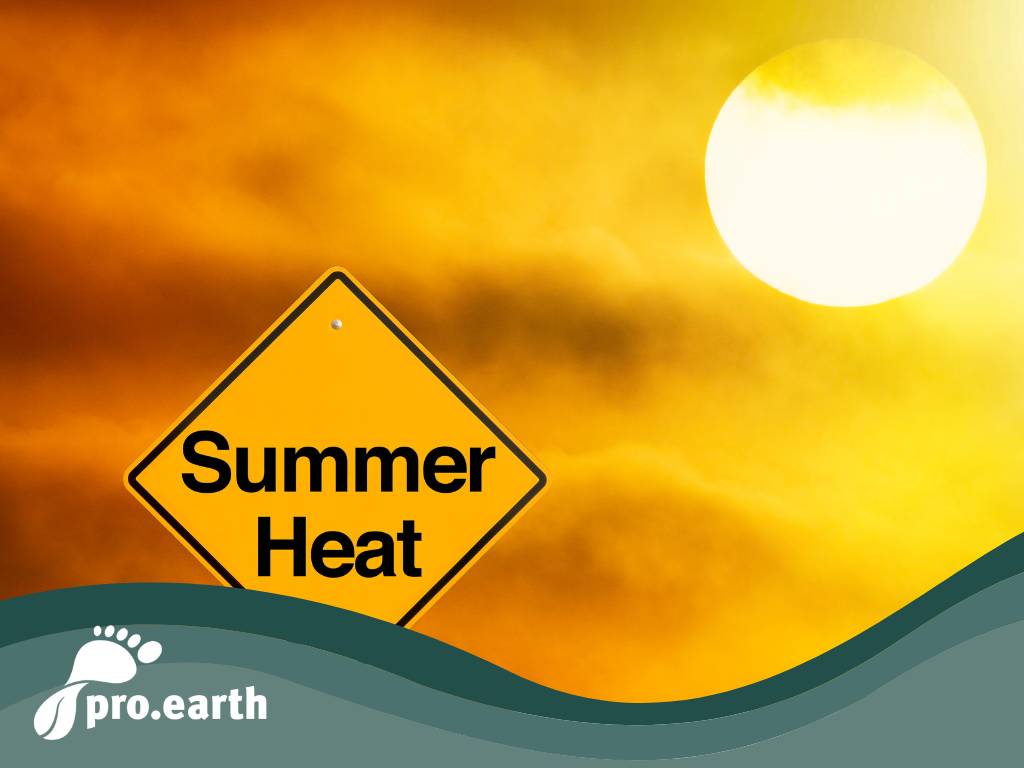Summer of extremes: Dramatic effects of the climate crisis put a strain on our health

We are in a hot period. This year, we and many other countries have experienced several extreme heatwaves followed by heavy rainfall. This topic has therefore been very much on our editorial agenda. And one conclusion of this year was, firstly, that the extreme heat is due to climate change and, secondly, that we in Central Europe, especially the urban centers, have some catching up to do in terms of heat protection. Austrian Health Minister Johannes Rauch has now announced that the heat protection plan will be revised.
Extreme heat, floods, mudslides: Austria has experienced one of the hottest summers since records began this year. At a press conference in Linz on Thursday, Health Minister Johannes Rauch and Climate Protection Minister Leonore Gewessler explained that a significant increase in the number of heat-related deaths is to be expected this year. Rauch announced a revision of the national heat protection plan by next summer in order to improve information and care, especially for older and sick people. Upper Austria's State Councillor for Climate Protection, Stefan Kaineder, called for measures to unseal surfaces.
Global temperature records in July are due to climate change
The climate crisis is the greatest threat to human health.
Environmental physician Hans-Peter Hutter
The summer of 2023 broke records: both June and July were the hottest months worldwide since records began. In Austria, too, the summer was one of the hottest in the 257-year history of measurements. So far, the temperature has been 2.8 degrees above the long-term average. The heatwaves were accompanied by storms: Extreme amounts of rain fell in parts of western and southern Austria in August. Floods and mudslides caused millions in damage.
The consequences of the climate crisis are also clearly evident in Upper Austria: the number of hot days has already doubled in recent decades. Today, more than 40 hot days, i.e. days with temperatures of more than 30 degrees Celsius, are observed in extreme years. Climate studies by the state of Upper Austria show that heat stress will continue to increase until the middle of the century, even if the Paris climate targets are met.
"People in Austria suffered from three heatwaves this summer. The last one was the most severe, lasting almost two weeks. The hot days were followed by tropical nights where you could hardly sleep a wink. We have seen the dramatic effects of the climate crisis over the past few weeks. Climate protection is a matter of survival and at the same time brings with it enormous opportunities: if we act now, we will not only prevent the catastrophe, but above all we will all gain a better quality of life together," says Climate Protection Minister Leonore Gewessler.
25,000 additional fatalities in Europe
Heatwaves and extreme weather events not only have a devastating impact on the environment, they also have a negative effect on health. According to a study published in the journal Nature Medicine, over 60,000 people across Europe died last summer as a result of the heat - 25,500 more than the average for the previous six years.
According to calculations by the Austrian Agency for Health and Food Safety (AGES), around 230 people across Austria have died as a result of heat-related illnesses. For this year, AGES expects a significant increase to between 300 and 500 deaths due to the heat.
Revision of the nationwide heat protection plan
Health Minister Johannes Rauch calls the trend "alarming": "Infants, older people and people with pre-existing conditions are at a significantly higher risk in hot summers." He also sees a social component: Low-income households are the hardest hit by the consequences of the climate crisis.
At the press conference, Rauch announced a revision of the national heat protection plan: "We must use every opportunity to inform the population about the right behavior and provide good care for people at increased risk during heatwaves."
It is therefore particularly important to involve stakeholders from the care and health sector who can contribute their practical experience. The Competence Center for Climate and Health at Gesundheit Österreich GmbH has been tasked with revising the heat protection plan. The revised national heat protection plan should be available before summer 2024.
Rauch has already agreed an exchange of experience and, above all, data on heat warnings and heat prevention measures with the German-speaking health ministers. "The revision of the national heat protection plan is another important step towards protecting the population even better," says Health and Social Affairs Minister Johannes Rauch.
Healthcare system at breaking point
Environmental physician Hans-Peter Hutter, MedUni Vienna: "There's no question that the climate crisis is the biggest threat to human health. Whether it's heat, allergies or 'new' infectious diseases - many people are already feeling the consequences. If we continue to do too little, we could soon reach the limits of the healthcare system. Adaptation measures are of course sensible and necessary; after all, we have to do something to make life more bearable in the hot future. But adaptation has its limits. Climate protection and prevention are therefore essential."
Making living spaces climate-friendly
Real countermeasures against the consequences of the climate crisis require a long-term rethink: "We need to make the major conurbations in particular climate-ready. The clear goal: more trees and green spaces, less concrete and asphalt!" emphasized Upper Austria's State Councillor for the Environment and Climate Stefan Kaineder. "To ensure that spatial planning takes the effects of the climate crisis into account, we are providing regional climate analyses as a data basis. We are also promoting the unsealing of surfaces from the state's climate department." Unsealed and greened areas are "not only a blessing for biodiversity, they also help us against the dangers of flooding and high water and they clearly protect against overheating", says Kaineder.






